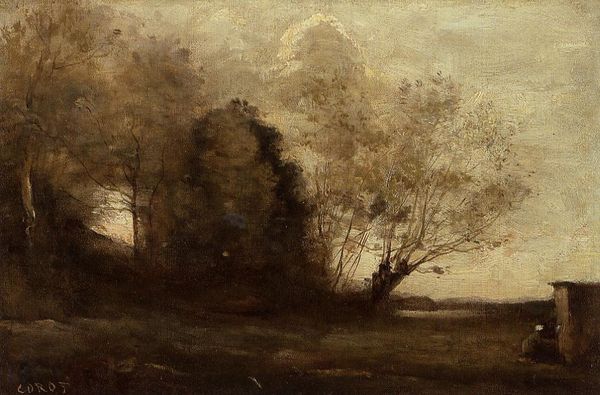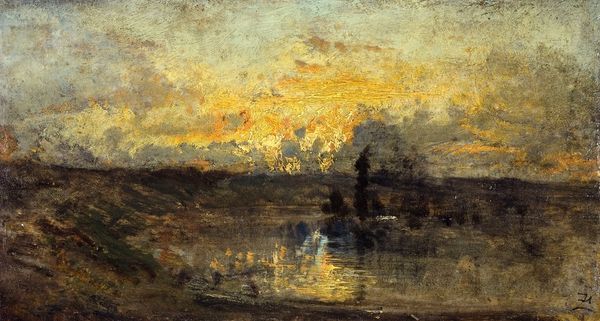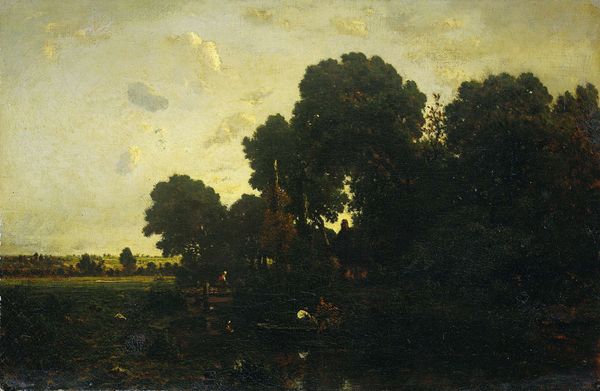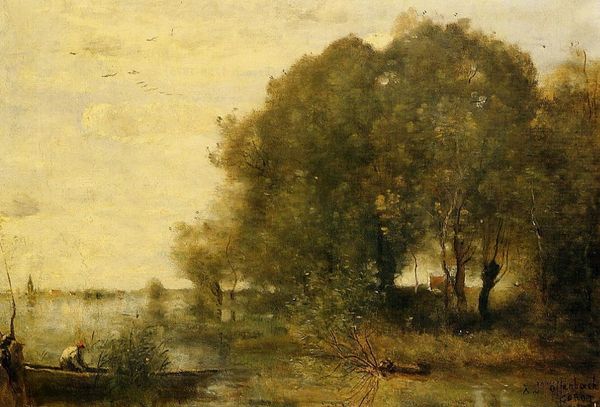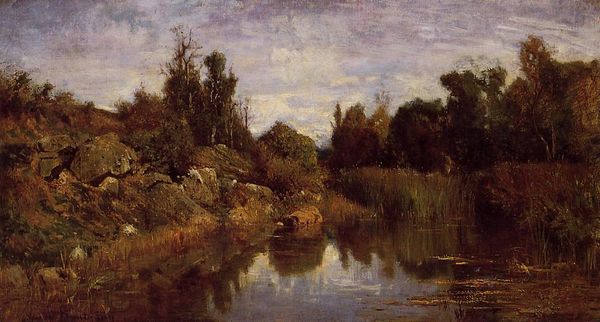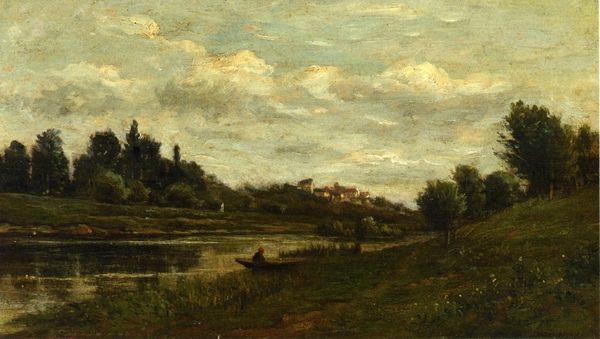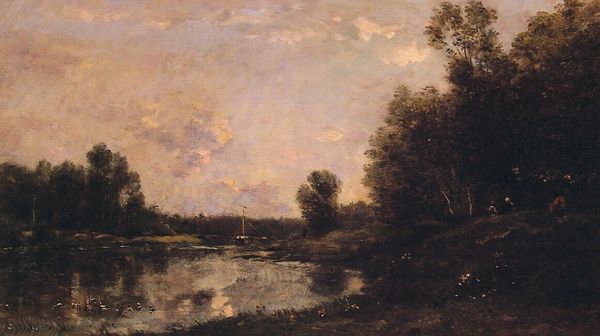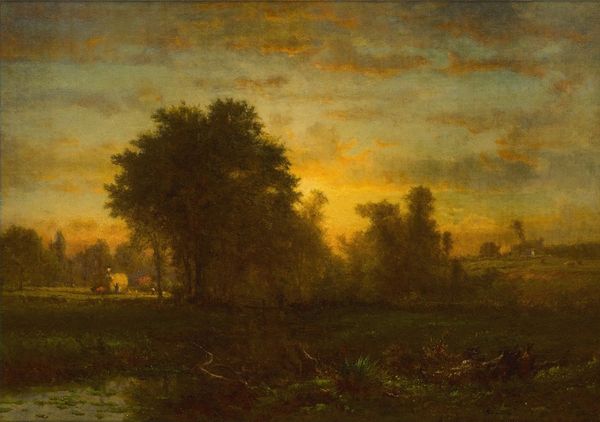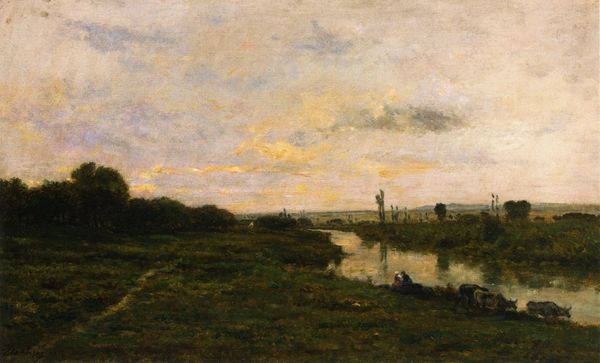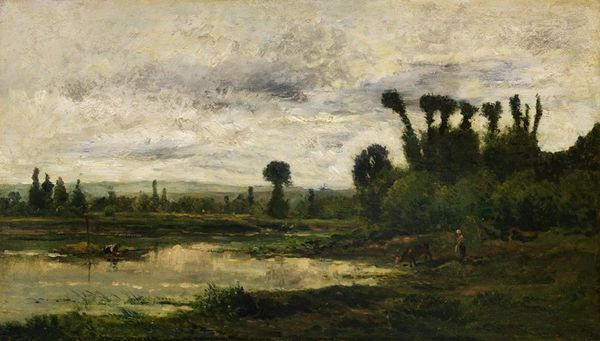
Copyright: Public domain
Editor: Eugène Boudin’s “Pond at Sunset,” painted in 1857, is such an atmospheric landscape! There's a real sense of stillness in it. What strikes you most about this work? Curator: The enduring symbolic power of the setting sun, certainly. Boudin captures that liminal space, that poignant transition between day and night. Sunset is a powerful visual cue representing the end of a cycle, be it a day, a period of life, or even an era. What emotional response does that twilight evoke in you? Editor: A sense of melancholy, definitely. A quiet resignation, perhaps? Curator: Precisely. Note how Boudin uses a limited palette, the dark blues and purples dominating the sky, mirrored in the pond. That mirroring itself is an ancient symbol - reflection, self-awareness. Are there specific symbols you think Boudin uses in his image construction? Editor: I hadn't really thought about individual symbols. Just the overall mood. But you’re right, even the trees silhouetted against the fading light seem to carry a symbolic weight. Curator: The 'plein-air' technique itself is significant. The act of painting outdoors, directly experiencing the light and atmosphere, adds another layer. He isn't just depicting a sunset; he is embedding his own experience, his own memories into the image. It’s almost like a personal, visual prayer, capturing a fleeting moment for eternity. Editor: It’s amazing how much deeper this painting seems now. I saw it as a beautiful scene, but you’ve revealed so many layers of meaning hidden within. Curator: And hopefully provided a new appreciation of how a landscape scene can unlock so much rich and deep reflection.
Comments
No comments
Be the first to comment and join the conversation on the ultimate creative platform.

